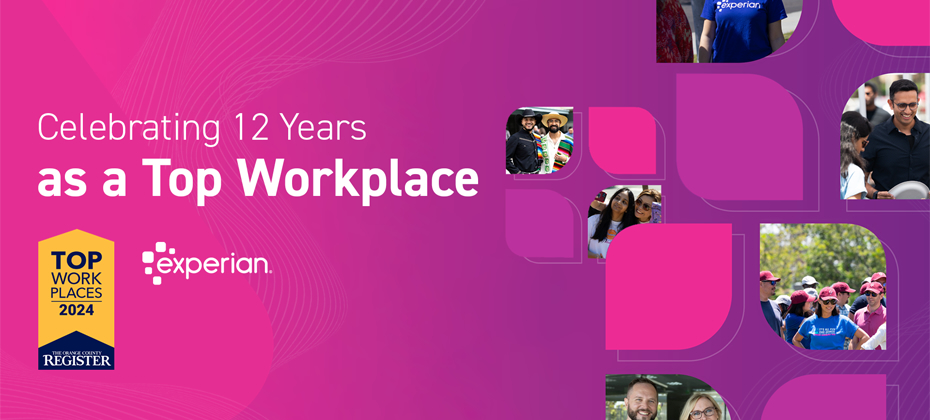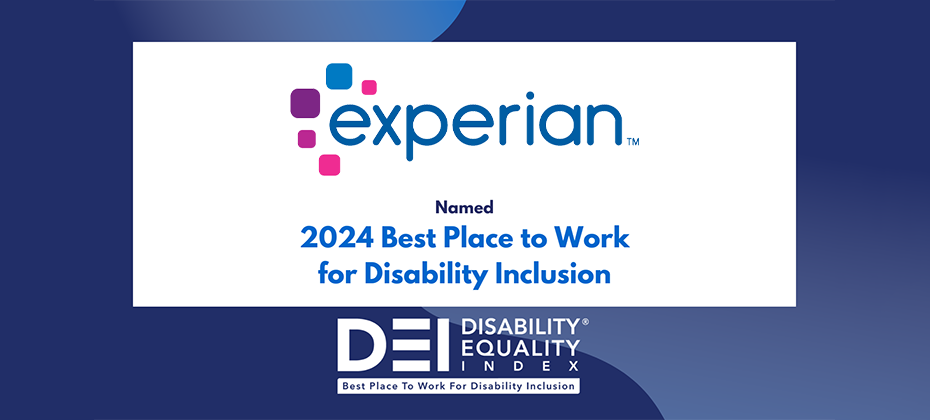At A Glance
At a Glance When an unknown printer took a galley of type and scrambled it to make a type 2ince the 1500s, when an unknown printer took a galley of type and scrambled it to make a type specimen book. It has survived not only five centuries, but also the leap into electronic typesetting, remaining essentially unchanged. It was popularised in the 1960s with the release ince the 1500s, when an unknown printer took a galley of type and scrambled it to make a type specimen book. It has survived not only five centuries, but also the leap into electronic typesetting, remaining essentially unchanged. It was popularised in the 1960s with the releaseince the 1500s, when an unknown printer took a galley of type and scrambled it to make a type specimen book. It has survived not only five centuries, but also the leap into electronic typesetting, remaining essentially unchanged. It was popularised in the 1960s with the releaseince the 1500s, when an unknown printer took a galley of type and scrambled it to make a type specimen book. It has survived not only five centuries, but also the leap into electronic typesetting, remaining essentially unchanged. It was popularised in the 1960s with the releaseince the 1500s, when an unknown printer took a galley of type and scrambled it to make a type specimen book. It has survived not only five centuries, but also the leap into electronic typesetting, remaining essentially unchanged. It was popularised in the 1960s with the release

Experian is all about turning insights into action… using data for good. Our commitment is to work with our clients, consumers, non-profits and other parties to help ensure that we, as a company and within society, continue to properly leverage big data for good. As part of that effort, each week we bring you Experian Insights – a round-up of news and resources highlighting how data is used for positive business, consumer and societal actions in many ways and across multiple sectors. Experian Insights in the News The One Thing That Could Instantly Make Your Credit Score Better – Time If both rent and utilities were part of credit scores as many as 54 million people (who are essentially invisible today) would be able to participate in mainstream finance. [Tweet] Five Minutes with Matt Seeley, EMS Group President – The Hub We're working with numerous clients to help guide their organization's data management strategy, putting insights into action to create improved and more meaningful customer interactions. [Tweet] Small Business Insights Drive Action for the Good of the Economy – Experian Blog Small businesses rounded out 2014 performing at a very high level, especially in terms of credit health. [Tweet] Agencies Navigate the Identity-Based Security Ecosystem – GCN Identity systems have become the top priority for organizations looking to safeguard government data from attackers. [Tweet] Experian's Newest CMO Aims to Focus on Consumers – AdAge.com Kristen Simmons will lead strategic direction, development and execution of marketing for Experian consumer services in North America. [Tweet] How Millions of Consumers Could Get Credit for Paying Their Utilities on Time – Experian Blog Study analyzed the financial benefits for consumers by adding positive, monthly utility or rental payments to credit reports. [Tweet] Jump-Starting Car Sales from the Service Lane – Automotive News Automotive News reports how VehicleXchange works with Experian to help car dealers find credit-worthy customers. [Tweet] 5 Tools for Improved Identity Management – GCN Government agencies will have to rely on improving existing technology solutions to help manage their ongoing security threats. [Tweet] Acting on Insights to Create Value for Marketers and Their Customers – Experian Blog Learn how successful businesses are drawing meaningful insights from data to impact almost every aspect of business operations. [Tweet] Subscribe to this blog by email to learn more about our data and analytics.

Experian is all about turning insights into action… using data for good. Our commitment is to work with our clients, consumers, non-profits and other parties to help ensure that we, as a company and within society, continue to properly leverage big data for good. As part of that effort, each week we bring you Experian Insights – a round-up of news and resources highlighting how data is used for positive business, consumer and societal actions in many ways and across multiple sectors. Experian Insights in the News The One Thing That Could Instantly Make Your Credit Score Better – Time If both rent and utilities were part of credit scores as many as 54 million people (who are essentially invisible today) would be able to participate in mainstream finance. [Tweet] Five Minutes with Matt Seeley, EMS Group President – The Hub We're working with numerous clients to help guide their organization's data management strategy, putting insights into action to create improved and more meaningful customer interactions. [Tweet] Small Business Insights Drive Action for the Good of the Economy – Experian Blog Small businesses rounded out 2014 performing at a very high level, especially in terms of credit health. [Tweet] Agencies Navigate the Identity-Based Security Ecosystem – GCN Identity systems have become the top priority for organizations looking to safeguard government data from attackers. [Tweet] Experian's Newest CMO Aims to Focus on Consumers – AdAge.com Kristen Simmons will lead strategic direction, development and execution of marketing for Experian consumer services in North America. [Tweet] How Millions of Consumers Could Get Credit for Paying Their Utilities on Time – Experian Blog Study analyzed the financial benefits for consumers by adding positive, monthly utility or rental payments to credit reports. [Tweet] Jump-Starting Car Sales from the Service Lane – Automotive News Automotive News reports how VehicleXchange works with Experian to help car dealers find credit-worthy customers. [Tweet] 5 Tools for Improved Identity Management – GCN Government agencies will have to rely on improving existing technology solutions to help manage their ongoing security threats. [Tweet] Acting on Insights to Create Value for Marketers and Their Customers – Experian Blog Learn how successful businesses are drawing meaningful insights from data to impact almost every aspect of business operations. [Tweet]

It seems like every conversation I have regarding how the U.S. economy is doing, I always think about small businesses. After all, small businesses are what drive our economy forward. They are the center of commerce for our country, and create the most jobs for our growing workforce. Quite honestly, without them, who knows where our country would stand today. With that said, how are small businesses really doing? Well, according to the Experian/Moody’s Analytics Small Business Credit Index, small businesses rounded out 2014 performing at a very high level, especially in terms of credit health. Small businesses improved their payment and credit management behavior across the board, increasing their average risk score, reducing the number of days they paid bills past due and lowering delinquency rates. The end of 2014 also saw a decrease in the number of businesses that filed for bankruptcy. Simply put, small businesses fared well at the end of last year. What does this mean in the grand scheme of things? For lenders and suppliers, the continued improvement in payment and credit management performance by small businesses is a welcomed sign. It enables them to feel more confident when extending credit. Understanding these trends give lenders the insight needed to make more informed decisions on loan terms, interest rates and credit limits. On the other side of the spectrum, small businesses have positioned themselves to gain access to a wider availability of credit than several years ago. Staying on top of their payment performance will be critical, as it can open up the credit spigot for years to come. Gaining insight into how lenders and suppliers perceive a small business’s risk, enables owners to understand the areas they need to improve on. At Experian, we’re committed to helping lenders, suppliers and small businesses alike, understand these data points, and turn them into actionable insights to help them move their businesses forward and grow. Enabling our clients to use this data for good and create new opportunities is at the core of everything we do. At the end of the day, the continued improvement in small business credit health is a positive for all parties involved. It enables lenders to feel more confident that they will receive payment on loans they’ve extended, and small businesses will have access to capital that helps them grow and succeed. And when small businesses succeed, it has a very positive affect on our economy.

Experian’s goal is to help consumers understand and actively engage in their credit life because it plays such an important role in building a secure financial future. Today marked another milestone in this quest. In a positive step for consumers and the U.S. consumer credit industry, Experian (along with the other two nationwide credit bureaus Equifax and TransUnion), announced the National Consumer Assistance Plan (NCAP) – a program that will further enhance our ability to collect complete and accurate consumer information, and provide consumers more transparency and a better experience when interacting with credit bureaus about their credit reports. The plan was launched after cooperative discussions and an agreement with New York Attorney General Eric Schneiderman. First, let me touch on what we are doing at Experian specifically. I’m a firm believer that in order to fulfill our goal of being the champion for consumers, we must continuously enhance our own internal processes and adjust our business to the changing needs of consumers and the market. I applaud the industry for coming together to form the NCAP, and in that same vein of commitment to the consumer, I plan to go even further in our efforts to deliver the highest quality data and the best consumer experience possible. For the last few years, we have embarked on a rigorous plan and invested millions of dollars in staffing, training, education and system improvements at Experian to ensure our data is as accurate as possible, to streamline the dispute process, and to make problematic disputes easier to resolve. Let me highlight what we are doing. We are building on our strong foundation of systems and processes to achieve even higher levels of quality. We have a team of more than 100 employees who are focused on receiving, loading and managing the quality of data from data furnishers. We maintain an inventory of more than 400 data quality rules that are applied each time data is furnished to us, so that we can ensure the data is historically consistent and logical before it is loaded into Experian’s database. Every month, we work proactively with data furnishers to further enhance the accuracy of the data they provide to us by pointing out any issues that they need to address; for example, data formatting issues that could result in inaccurate data being added to a consumer credit report. Our goal is to manage our data proactively at the front end to benefit all consumers and lenders. The accuracy, quality and integrity of our data is foundational to Experian’s business, and we are committed to further enhancing the consumer credit experience by attaining the highest level of data accuracy and quality. 98 percent is good – but not good enough. We are making further improvements in data accuracy. Perfecting the credit ecosystem, which includes more than 10,000 data furnishers and 1.3 billion monthly credit report updates, is complicated. As an industry, we have achieved a 98 percent accuracy rate for credit reporting. While that is good, it is not good enough. We are striving for perfection, taking tangible steps and making real investments to further enhance accuracy. We are making the dispute process easier. As the first credit bureau to have launched a national credit education initiative, we have more than 20 years experience working with consumers to help them more effectively manage their credit. In the last two years, we have spent considerable resources to improve engagement with consumers: We have upgraded our website to make it easier for consumers to dispute reports online. We have added a new system that enables consumers to provide dispute documentation through a secure document uploading process. We have added more agents, so consumers can speak to one of our representatives to ask questions. We have increased bilingual support for our Spanish-speaking consumers. These investments have shown results: The number of disputes initiated has dropped, dramatically decreasing 42 percent since 2008. The time it takes to resolve disputes has been reduced in the last year, with almost 59 percent of all disputes resolved within 10 days, and an additional 19 percent resolved in 20 days. The timeframes of the disputes are much shorter than the 30-45 days allowed by federal guidelines. But, of course, our efforts will continue to provide the best consumer experience possible. Credit reporting enables the American way of life. Our industry helps fulfill dreams of owning a car or a home. It allows students to attend college. And it stimulates financial growth. Our work is not without errors, but we are wholeheartedly committed to perfecting our role in the credit ecosystem – empowering consumers and the economy alike. As I said, our goal is to be a champion for consumers. We will continue to invest in and work toward that goal. We will do more. We will do more, and as CEO of Experian North America, you have my commitment.

We’re just a few months into a new year and already there are clear signs how the Consumer Financial Protection Bureau (CFPB) plans to further advance its regulatory authority over bank and non-bank entities across the credit ecosystem. Here is a look at the top three priorities for the CFPB in this space: 1) Debt Collection Complaints about debt collections are near the top of the list of consumer comments for both the CFPB and the Federal Trade Commission. In fact, according to a semi-annual report by the CFPB released in December 2014, 36% of consumer complaints concerned continued attempts to collect debt that was not owed. The high number of consumer complaints coupled with the complexities of the debt collection industry, in general, has prompted the CFPB to take action. The bureau put out an advanced notice of proposed rulemaking in November 2013 that drew more than 23,000 comments and it’s expected to release a proposed rule later in the spring of 2015. In addition, during a field hearing last December, the CFPB released a report focusing on both medical and non-medical collections. The report highlights the lack of standardization concerning how and when collection tradelines are furnished to credit reporting agencies (CRAs). Specifically, the report suggests that these variations can lead to consumer confusion and may impact accuracy. With collections under the microscope, expect to invest more in data management and data governance systems as part of new compliance and standardization initiatives as well as to alleviate consumer complaints. 2) Consumer financial education and empowerment Consumer financial education and empowerment remains a top priority of the CFPB, since it is baked into the bureau’s organizational structure. The CFPB has encouraged financial institutions to simplify disclosures and to provide credit scores on monthly statements. In remarks before a Consumer Advisory Board meeting in February, CFPB Director Richard Cordray made clear that the initiative is aimed at helping increase transparency and awareness of credit scores so that consumers can better understand the impact that they have on their lives. Furthermore, Director Cordray has stated that, “Financial products can help make life better, but they can also make life harder… Responsible businesses must help make the costs, risks, and benefits of financial products easier for consumers to understand.” To that end, expect renewed calls for improvements in customer service, education and credit data transparency as part of an ongoing move to facilitate consumer empowerment. 3) Accuracy of consumer credit data The accuracy and completeness of information contained in consumer credit files will continue to take center stage as the CFPB focuses on the responsibilities and duties of both credit bureaus and data furnishers, particularly debt collectors. Hearkening back to the field hearing conducted last December in which the CFPB’s study focused on the lack of standardization in collection tradelines, CFPB Director Cordray emphasized the responsibilities of data furnishers — including both debt collectors and lenders — to provide credit bureaus with complete and accurate data. In addition, the CFPB remains highly interested in ensuring that the consumer dispute resolution system operates efficiently. The CFPB also announced it would require CRAs to provide accuracy reports on data furnishers that identify key risk areas for consumers. New reporting requirements for CRAs include identifying furnishers with the most disputes, industries with the most overall disputes, and furnishers with the highest overall disputes relative to industry. While data reporting will remain voluntary, furnishers will need to take greater steps to ensure fair and accurate reporting of consumer credit data or face greater scrutiny by the CFPB. These top priorities demonstrate some of the key focal points by the CFPB within the consumer credit environment anticipated this year. To that end, it will be important for covered entities to ensure that they not just comply with current federal and state laws, but also strive to advance industry best practices while keeping consumers front and center. For information on the responsibilities of furnishers submitting information to consumer reporting agencies, access Section 623 of the Fair Credit Reporting Act. For information on how to act and comply with new data quality rules, visit Experian Data Integrity Services.

For the second year in a row, Experian Marketing Services has been named one of the top email service providers (ESPs) in the market by The Relevancy Group. The Relevancy Ring — ESP Buyer’s Guide 2015 evaluates and ranks ESP vendors according to the satisfaction of several hundred marketers and the vendor’s ability to meet their challenges and goals through product functionality and innovation. The report also cites Experian Marketing Services for excelling in areas such as integration, omnichannel marketing and production services. According to the report, Experian Marketing Services differs from a traditional ESP in its ability to support real-time optimization and machine learning using a combination of data, services and analysis. “Experian goes out of their way to understand a client’s unique challenges. They can simplify complex systems and create solutions that help clients to make their marketing programs more sophisticated,” said David Daniels, CEO and Founder of The Relevancy Group. The report also praises the Experian Marketing Suite for its infrastructure stability, deliverability tools and services, creative services and technical services. The report states, “Clients interviewed tended to praise the timeliness, quality and the ability to scale Experian’s technical implications. They also are seen as great partners and extensions of their clients’ teams.” Learn more about the Experian Marketing Suite here, and download your own copy of The Relevancy Ring – ESP Buyer’s Guide 2015 today.

Launch of AdTruth Resolve simplifies cross-device audience management for marketers Experian Marketing Services, today, introduced AdTruth Resolve, a new technology designed to simplify the process of recognizing and engaging audiences across all devices and environments. AdTruth Resolve is designed for the multinational marketer that struggles to make smarter, more data-driven business decisions and keep up with today’s mobile-first consumer. AdTruth Resolve provides marketers with the means to reconcile and associate their existing digital identifiers — including cookies, device IDs, IP addresses and more — and then leverage that consolidated intelligence for visibility across devices. AdTruth Resolve represents another milestone in Experian Marketing Services’ long-term strategy to provide marketers with a ubiquitous, consistent and persistent link across all channels as part of the Experian Marketing Suite. Powered by a three-tiered identity-management framework, the Experian Marketing Suite’s Identity Manager gives marketers everything they need to persistently, accurately, effectively and respectfully recognize, resolve and reach consumers across all devices in all digital environments. “The AdTruth Resolve technology is meant to address the needs of both the data owners and the consumers in the digital ecosystem,” said Matt Seeley, president at Experian Marketing Services, North America. “Our AdTruth Resolve technology functions within a company’s own data and technology environment, enabling marketers to focus on leveraging their data assets within their existing tools and services. It is an excellent extension to the Experian Marketing Suite’s Identity Manager and will further enrich the customer view we are already providing to our marquee clients.” AdTruth Resolve uses a process called digital identification resolution to remove the need for organizations to piece together and manage the vast amount of identification data variables themselves. AdTruth Resolve identifies, reconciles and associates a company’s existing digital identification data assets, allowing the consolidated data to be used throughout its digital marketing stack and across the entire digital ecosystem in a privacy-mindful way. AdTruth is known for DeviceInsight™, a statistical device-recognition technology that delivers a privacy-compliant way to associate online activity with a specific device. AdTruth Resolve continues Experian’s consumer-privacy-minded technology development by facilitating broader opt-out capabilities. “Marketers and publishers have struggled to deliver consistent, targeted messages across the entire digital landscape because their customer data resides in so many different systems,” said James Lamberti, vice president and global general manager of AdTruth. “By implementing AdTruth Resolve, marketers have full control over, and can take full advantage of, their own customer data to address this situation. AdTruth Resolve is a smart product for achieving a consolidated customer view that protects an organization’s data and respects consumer privacy as well.” The Experian Marketing Suite was designed to be flexible, giving clients complete control over the components necessary to power their programs. As a client’s campaign requirements and complexity evolve, they can easily take advantage of the functionalities across the Marketing Suite’s three core managers: Identity Manager, Intelligence Manager and Interactions Manager. Similarly, the AdTruth Resolve technology can be used as an integrated part of the overall Marketing Suite or incorporated into a company’s existing tools and services. Click here for more information about AdTruth Resolve.

Years ago, when data was the shiny new object, people talked a lot about it being organized into useful information that could drive actionable insights. It sounded great at the time. Unfortunately, at that time (and we’re talking about the late 90s and early 00s) the promise far outstripped the reality. However, in the past five years the responsible collection and usage of data has significantly evolved. In fact, we see that 95 percent of companies feel driven to turn data into insight to understand their customer needs, find new customers and increase the value of each client. Today, successful businesses are drawing meaningful insights from data to impact almost every aspect of business operations. But what actually makes data valuable? How can this incredible volume of information be converted into action? In its rawest form data really isn’t all that useful. A name here, an email address there, and purchase intent somewhere else. But responsibly collecting and connecting those data is the key, and it’s also a complex task that almost all businesses struggle with. Accomplishing this task – turning insights into action – is what we do, and it’s something we do better than others. Transforming insights into action can take many different forms. It can mean helping marketers communicate with customers in more meaningful and effective ways; helping consumers secure loans that are right for them; or helping businesses protect themselves against risk. Given what we do at Experian Marketing Services, it’s that first point I’d like to focus on. How do we approach data so that it has the greatest value for marketers and their customers? First and foremost, we treat data with respect and protect it rigorously. For some it may be easy to forget that each and every bit of consumer information out there has its roots in a real person. This is something we never forget or take for granted at Experian. We hold ourselves to a higher standard when it comes to working with and managing consumer information. That ethos is in our DNA, and is the foundation of everything we do. Equally important is ensuring information quality. For a marketer, accurate information is critical. Before you can reach out to a customer you need to have a high degree of confidence that you are reaching the right customer. In many respects, inaccurate data is a bigger problem than a dearth of information. Why? Today we see a little over a quarter of information is believed to be inaccurate in company databases. That high degree of error dramatically impacts marketing success, but also the business bottom line. The final piece of the puzzle is making that highly accurate and well-protected information available when, where and how it’s needed. This means being steeped in the innovation that is part and parcel of the integrated marketing mix. Our Experian Marketing Suite provides marketers with the ability to plan, manage, execute and optimize all of their customer interactions in real time across any channel. And this is critical as today’s consumer moves seamlessly between media channels. She may be reading an email one minute, browsing the Web in the next and scanning Facebook on the phone in the one after that. This reality of the consumer device experience creates opportunities for marketers to meet the consumer where they are with messages that make the most sense, at the right time. For example, promoting the latest episode of a popular program to a streaming-enabled device in the evening is an actionable impression and one likely to be welcome by a fan. When this type of interaction happens, consumers often don’t think twice, they simply appreciate the natural and timely delivery of relevant information. Information needs to inform every consumer engagement in today’s cross-channel world. We’re able to deliver this through our strong foundation in marketing technology, our appreciation and understanding of today’s platforms, apps and devices, and by keeping an eye on the future. We recognize that consumers live in an increasingly diverse digital world. We understand that the data – accurate data that provides a great experience for consumers and marketers alike – is an asset like no other. It’s the bedrock on which so many businesses, relationships and experiences are built. Serving as responsible stewards of that data through the technology and services we provide has allowed Experian Marketing Services to play a central and trusted role for marketers around the world.

Experian announced today that its 34th annual Vision Conference will challenge attendees to “Think Big,” focusing on data- and analytics-driven solutions to attain quality business growth. One of the industry’s leading events, Vision 2015 will feature Earvin “Magic” Johnson, Jr., legendary NBA athlete and businessman; Dr. Madeleine K. Albright, former U.S. Secretary of State; and James W. Paulsen, Chief Investment Strategist at Wells Capital Management, as keynote speakers. Vision 2015 will be held May 3–6 at the Gaylord National Resort in the Washington, D.C. Area. Each year, Vision combines in-depth research, cutting-edge technology and expertise from industry leaders to help Experian’s clients strengthen their balance sheets and plan for sustained growth. “In the data-driven economy, trusted insights are more important than ever before, especially as businesses continue to face increased scrutiny over their practices and attempt to navigate a complicated regulatory landscape,” said Lloyd Parker Jr., group president of Credit Services, Experian North America. “The Vision 2015 Conference will convene the brightest minds to speak about a wealth of trends and topics that can be applied directly to business strategies.” This year’s theme of “Think Big: Data. Analytics. Insights. Growth” will be explored through more than 80 breakout sessions with thought-provoking perspectives, best practices and solutions for addressing emerging business issues for clients: Beyond Financial Services — Beyond Financial Services will feature experts and clients across a variety of industries who will share tested approaches to improving both the customer experience and confidence in business, as well as ways to increase the stability and soundness of portfolios, launch effective digital-marketing campaigns and optimize understanding of auto industry opportunities. Commercial Lending Insight — The Commercial Lending Insight track will deliver unique perspectives on managing credit risk, improving operating margins and other portfolio management issues that commercial and small-business lenders continue to face today. Peers and industry experts will lead thought-provoking sessions exploring a broad range of topics — from acquisitions to loan management — that will have attendees re-evaluating how they approach their commercial lending practices. Data and Analytics — The Data and Analytics track will cover the innovative ways Experian and its clients are responding to the newest challenges and opportunities in today’s rapidly expanding data environment. Session topics will include new technologies, best practices and real-world case studies. Fraud Prevention — Fraud Prevention will feature discussions with service providers and industry leaders on current and emerging fraud prevention and identity authentication techniques spanning private, public and healthcare sectors, as well as strategies for improvements to current operational processes and future road maps. Hot Topics — Hot Topics will explore innovations and new concepts related to the challenges of the ever-changing market through panels and case studies featuring industry experts on the regulatory environment, social media impacts to assessing credit risk, improved loss forecasting, model governance and treatment of medical collection trades. Hot Topics also will cover the growth of mobile offers through optimization tools and unique analyses of millennial borrowers. Making Big Decisions — This track will deliver unique and valuable perspectives on lender decisions through discussions on new data assets and processes across customer acquisition, account and customer management, loss mitigation and collections. Public Sector — Public Sector clients will hear from industry experts and learn about best practices in data, analytics and advanced technologies at a variety of sessions covering data, fraud prevention, improved revenue streams, population shifts and community planning. Targeted Growth — The Targeted Growth track will provide insights into strategies for acquiring new consumers, including enhanced targeting based on current consumer behaviors, moving beyond traditional methods into digital channels and using data analysis to find your next best customer. Who Should Attend Vision Experian’s Vision Conference has proven valuable to attendees across a broad spectrum of industries. Each year, participants range from C-level executives to business line management and functional roles, including credit and collections management, business development, consumer and commercial lending, analytics, modeling and fraud management. Learn more about Vision 2015 and follow us on Twitter at @ExperianVision and our LinkedIn community.

Every day, 2.5 quintillion bytes of data are created – in fact, 90% of the world’s data was created in only the last few years. With the staggering amount of data available, we have an unprecedented opportunity to uncover new insights and improve the way our world functions. The implications of these new capabilities are perhaps nowhere else as crucial as within our government. Public sector officials carry the great responsibility of conducting complex missions that directly affect our communities, our economy, and our nation’s future. The ability to make more informed, insightful choices and better decisions is paramount. Especially at a time of broader global unrest and uncertainty, Americans rely on our government to be transparent, fair, ready and to make the right decisions – our trust is in the hands of our elected officials and public servants. Data alone is not enough to inform and affect change. However, with integrated information assets, insightful analysts and collaborative processes, data can be transformed into something meaningful and actionable. Our government has already begun leveraging data for good across agencies and varied missions, with more potential unlocked each day. Local governments like Orange County, California are utilizing data through address verification services to keep their voting lists accurate – ensuring the integrity of elections and saving the taxpayers thousands of dollars otherwise wasted on mailings to outdated lists. The Orange County Registrar of Voters – the fifth largest voting jurisdiction in the county – has been able to cancel 40,000 voting records, with an estimated savings of $94,000 expected from 2012 through 2016. The examples are numerous and growing: A suite of optimization tools helps states find non-custodial parents, determine their capacity and likelihood to pay child support, and trigger alerts with new critical information, maximizing the likelihood of payment and recovery, ultimately improving the welfare of children and reducing poverty More than 150 state, county and local law enforcement agencies leverage data to help identify persons of interest, conduct background screening for employees and contractors and provide financial backgrounds for criminal investigations, ensuring our continued safety By using the power of data to manage user authentication, credentials and access controls, the government is working harder – and smarter – to protect our security The government is leveraging verified commercial data to help agencies validate the fiscal responsibility of potential contractors and monitor existing contractors, which helps provide transparency and reduce risk By using data and analytics to authenticate applicants and validate financial data, the government is ensuring access to benefits for those who meet eligibility requirements, while at the same time reducing fraud Private sector partners are supporting municipal efforts to improve financial stability in households by providing the current credit standing of consumers and monitoring overall changes in financial behaviors over time, to help counsel and educate citizens And that’s only the beginning. The possibilities are endless – from healthcare to finance to energy – data can be leveraged for the advancement of our society. It even happens behind the scenes, working to protect information in ways most citizens never realize. Data insights are used to ensure citizens have secure online access to their information – ever see those randomized, personal questions? That’s data at work. The same technology is the de facto ID Proofing standard for the VA and CMS. How does it all work? By combing through the data carefully, putting it in context, looking at it in new ways, and thinking about what all this information really means. Much of this is made possible through public-private partnerships between the government and companies like Experian. So the next time someone complains about the slow pace of government, let them know the truth is government is moving quickly, leveraging data and private sector partnerships to uncover new insights that impact the greater good.

Big data received a lot of press coverage in 2014; unfortunately, it wasn’t all kind. That’s too bad; because it’s not fair to lay the blame for every security lapse or e-mail misdeed squarely on big data. The truth is that some of the very technologies that are considered big data are in fact the same ones that best protect us from abuse. Like most technologies, big data can be used for good or it can be abused. However, I believe that the good that big data brings far outweighs any accompanying risks. While data security begins with common sense, and we must all deploy data security best practices, we should also appreciate the value in what big data offers. Identity verification and transaction validation rely on the massive power of big data. It is big data initiatives that safeguard more than 5.5 billion transaction events annually. When managed appropriately – and in compliance with existing laws and regulations regarding privacy – data is a force for good. At Experian we see the use of data for good every day. We see how big data is being used to serve more than 2,800 hospitals and thousands of medical practitioners. It is data processes that verify patient identities and conditions when they arrive for treatment. Additionally, by making sure patients are who they say they are, data processes verify coverage and help care-providers prevent fraud. In many cases, these systems alert patients to eligibility for aid that they were not even aware of they were entitled. Fraud prevention is particularly important in an age of electronic medical records. A combination of technology advances and recent healthcare reforms have made patient data available online to pharmacies, hospitals and labs, and patients themselves. According to a survey by the Ponemon Institute, 72 percent of healthcare organizations indicated they are only “somewhat confident” or “not confident” in the security of electronic patient data. Further, Ponemon expects that the cost of breaches could reach $5.6 billion in 2015. This is why healthcare providers are using big data to safeguard patient records by adopting identity theft protection platforms and device verification technologies – the same security mechanisms used by banks. These safeguards are possible thanks to the power of big data. It is what gives us the ability to sift through large amounts of data, find patterns and distill the insight that allows us to make better decisions, improve our business processes and ultimately, drive our economy forward. Across the country big data technology, along with analytical and consultative services, help financial institutions and businesses in all industries derive insight, which ultimately enables them to make more sound lending decisions, better manage their credit portfolios and acquire the best customers. It is the insight brought by big data that is allowing millions of renters to obtain their first lines of credit. For example, by collecting and analyzing on-time rental payments more people are building the credit histories necessary for financial and economic inclusion. These uses of data for good are stories I hope to see better publicized in the year ahead. There are examples from coast to coast. Like at the National Institutes of Health, as part of its “BD2K” (Big Data to Knowledge) initiative, which allows physicians to analyze patient data and vast health care histories databanks to determine which patients may be at greater risk of developing conditions such as diabetes or heart disease; or in Kansas City, where researchers are maximizing the productivity of their lands by studying detailed soil data. And in Indiana, where the state government is analyzing population data to prioritize funding for the most effective programs, including those that reduce infant mortality rates. Yes; we must continue to carefully safeguard our sensitive information. Yet we must also recognize that there will always be those looking to exploit any vulnerability. There comes a point where we must decide whether to embrace the benefit that comes from the power of information or allow the cynics to constrain the innovation and limit its potential. It’s unrealistic to imagine that we will stop relying on big data processing. Our financial systems, healthcare systems, and scientific advancement rely on it. Rather, our focus should be on how we protect our data. So yes, big data is good. The responsible, smart and compliant use of big data benefits people, our society and our economy. In 2015, let’s resolve to not paint big data with such a broad brush. It is my hope that in this New Year, more people will come to recognize ways to use data for good. Craig Boundy is CEO of Experian North America.

It’s been an incredibly busy few months at Experian, not only with the debut of powerful new product features, but also the recent announcement that Experian now offers its members FICO® Scores through its direct-to-consumer products. Making FICO® Scores available through Experian products will allow consumers to boost their credit confidence more than ever before – allowing them to harness the power of a widely recognized family of credit scores to make wiser decisions about their financial futures. We think that knowledge might make those folks walk taller as they head to see their lenders. You’ve probably seen these commercials on TV and YouTube, but there’s an opportunity for everyone, including small business owners. The confidence that comes from being credit-wise can help you in many situations, like when you're looking to buy a home: ] Just like the pro negotiator and her husband in this piece, we want our members to feel incredibly confident about their credit. When credit helps them maximize their dreams, those successes are something we can all celebrate. Helping people understand how their behaviors shape their credit scores is something we’re committed to at all levels because it delivers something more than just a free gift with purchase—it’s a lifetime understanding of credit that has real value. Offering FICO Scores truly enriches the product experience that our members receive, since they’re well known as the family of scores used in 90 percent of credit decisions. When they recently celebrated 25 years of the FICO® Score by ringing the starting bell at the New York Stock Exchange on January 7, the FICO team got down with their Credit Swagger and marked the occasion with some moves you may recognize from the video above: http://experian.tumblr.com/post/108254286209/synchronized-credit-swagger-nextlevel We know that people have been celebrating the power that comes from now seeing their FICO Scores from Experian data. We’ve been seeing great activity on our Facebook and Twitter accounts since the new product went live, and we see the promise of our products reflected in them. People are hearing—and truly understanding—how being credit savvy can give them that Credit Swagger you’ve seen, and help speed the clock to realizing their dreams. We’re honored to be their trusted credit and finance resource, working each day to respond to their needs as well as leading the evolution of our business landscape. We hope that you don’t see credit as a four-letter word (because it’s not!). We couldn’t be happier to bring that knowledge to life with a FICO® Score for our members. This article is provided for general guidance and information. It is not intended as, nor should it be construed to be, legal, financial or other professional advice. Please consult with your attorney or financial advisor to discuss any legal or financial issues involved with credit decisions.











